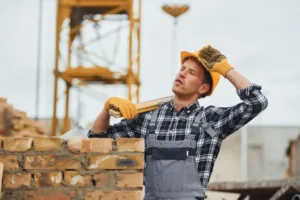The Occupational Safety and Health Administration (OSHA) is a government agency responsible for ensuring safe and healthy working conditions in the United States. It was established by the Occupational Safety and Health Act of 1970, which was signed into law by President Richard Nixon. OSHA's role is vital in the construction industry, where workers are exposed to various hazards daily. In this blog post, we will discuss OSHA's role in the construction industry in New York and how it helps ensure the safety and well-being of workers.
OSHA's Role in the Construction Industry:
OSHA's primary role in the construction industry is setting and enforcing safety standards to minimize workplace injuries, illnesses, and fatalities. These standards cover various topics, including fall protection, scaffolding, ladder safety, personal protective equipment, and more. OSHA also provides training and education to employers and employees on these safety standards.
OSHA Inspections:
To ensure compliance with safety standards, OSHA conducts inspections of construction sites. These are either random or in response to complaints or incidents. OSHA inspectors have the authority to issue citations and fines to employers who violate safety standards. In some cases, the agency may shut down a construction site if the violations pose an immediate danger to workers.
OSHA Training and Education:
OSHA is crucial in providing training and education to employers and employees in the construction industry. The agency offers various resources, including the OSHA Outreach Training Program, a voluntary program promoting workplace safety and health. The program offers 10-hour and 30-hour courses, which OSHA-authorized trainers teach. These courses cover hazard recognition, avoiding common hazards, and understanding workers' rights and employers' responsibilities.
OSHA's Impact on the Construction Industry in New York:
New York has one of the country's largest and most active construction industries. As a result, the state has adopted and enforced OSHA's safety standards through its state plan, the New York State Public Employee Safety and Health (PESH) program. This program is responsible for inspecting public sector workplaces, including construction sites, for ensuring safety standards compliance.
OSHA's presence in New York has had a significant impact on improving safety in the construction industry. For example, the agency's Local Emphasis Program on construction in New York City has increased inspections and enforcement actions, resulting in decreased construction-related fatalities and injuries.
Recent OSHA Initiatives in New York:
OSHA has recently introduced several initiatives to improve safety in the construction industry in New York. These include:
- Increased Focus on Fall Protection: Falls are the primary cause of fatalities in the construction industry. OSHA has launched a national campaign to prevent falls in construction, which includes providing resources, training, and increased enforcement of fall protection standards.
- Silica Standard Enforcement: OSHA introduced a new standard for respirable crystalline silica, a common hazard in the construction industry. The standard sets stricter exposure limits and requires employers to implement engineering controls, provide respiratory protection, and develop a written exposure control plan.
- COVID-19 Guidance: OSHA has guided to help employers in the construction industry to protect their workers from exposure to COVID-19. The guidance includes social distancing, sanitation, and personal protective equipment recommendations.
Final Thoughts:
OSHA's role in the construction industry in New York is essential for ensuring the safety and well-being of workers. By setting and enforcing safety standards, conducting inspections, and providing training and education, the agency helps minimize the risk of workplace injuries, illnesses, and fatalities. The construction industry is inherently dangerous, and workers are at a high risk of injury or death without proper safety measures. OSHA's presence in New York and its initiatives to improve safety in the industry has significantly impacted countless lives. However, despite OSHA's efforts, the construction industry still faces significant safety challenges. Employers and workers must remain vigilant and continue to prioritize safety. Workers should be trained in hazard recognition and mitigation, and employers should prioritize safety measures, such as providing personal protective equipment, maintaining equipment and tools, and enforcing safety policies. In conclusion, OSHA plays a critical role in the construction industry in New York and nationwide. Its focus on safety standards, inspections, and training has helped improve safety in the industry, but more work needs to be done. Employers and workers must work together to prioritize safety and create a safety culture in the construction industry. With continued efforts and a commitment to safety, the construction industry can be made safer for everyone involved.




